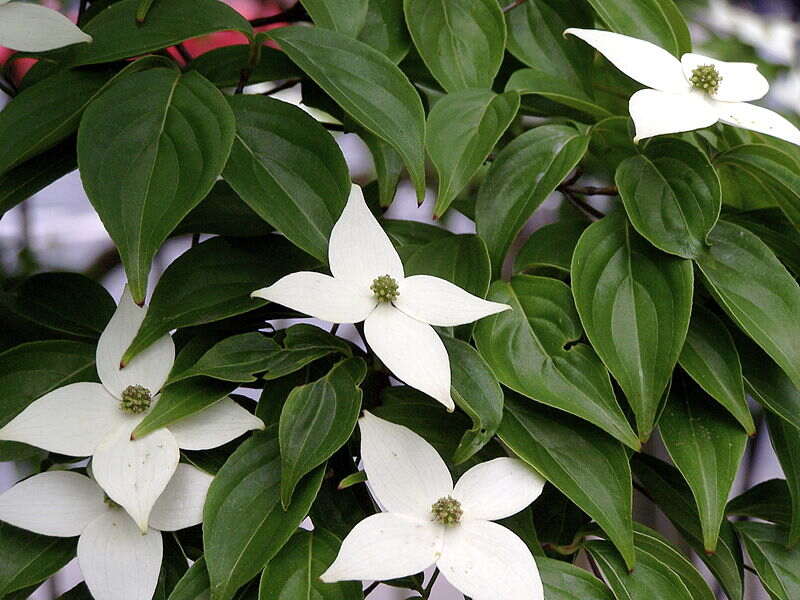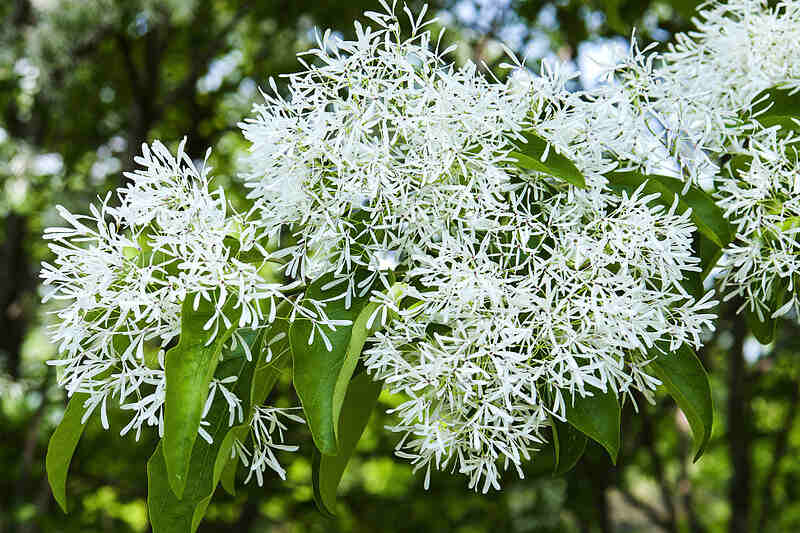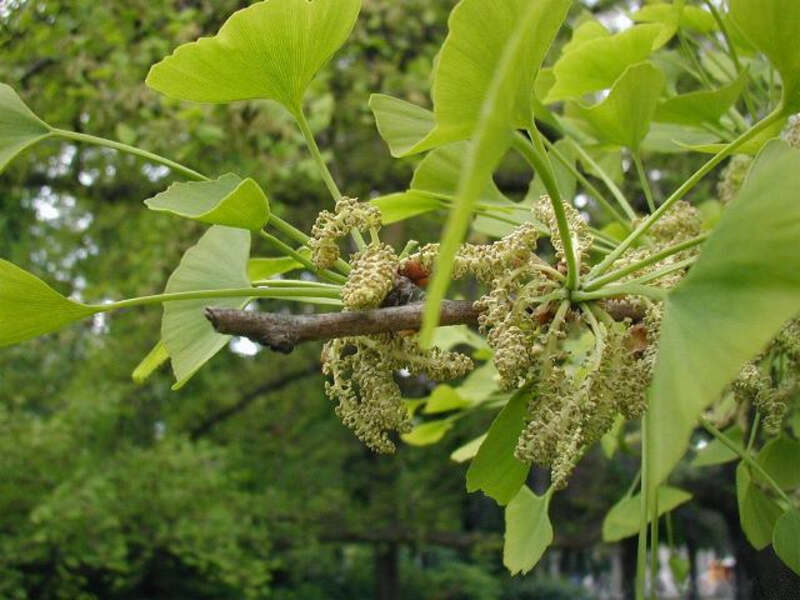
Are you concerned about introducing unwanted diseases or pests into your landscape with your next tree planting project? Luckily there are numerous disease-resistant trees that will add beauty to your yard without the added risk of disease.
A key to keeping a healthy and thriving yard often lies in what growers choose to plant. Carefully selecting trees that don’t have any significant, life-threatening disease or insect issues could be what saves your landscape when disease sweeps across your area.
- Best Disease-Resistant Trees
- 1. Kousa Dogwood (Cornus Kousa)
- 2. Persian Parrotia (Parrotia Persica)
- 3. Southern Magnolia (Magnolia grandiflora)
- 4. Chinese Fringe Tree (Chionanthus retusus)
- 5. Ginkgo (Ginkgo biloba)
- 6. Paperbark Maple (Acer griseum)
- 7. Japanese Pagoda Tree (Styphnolobium japonica ‘Pendula’)
- 8. Golden Rain Tree (Koelreuteria paniculata)
- 9. Japanese Snowbell (Styrax japonicus)
- What Makes a Tree Disease-Resistant?
- How Do You Know If Your Tree Has a Disease?
- What Do You Do If Your Tree Has a Disease?
- FAQ About Disease-Resistant Trees
Best Disease-Resistant Trees
When researching disease-resistant trees, you want to keep in mind that choosing a diverse collection of tree species will keep pests from moving rapidly through your landscape, it’s unlikely the pest would be attracted to all tree species.
1. Kousa Dogwood (Cornus Kousa)

The Kousa Dogwood is typically a slow-growing, small to medium-sized tree great for all seasons. Its showy, creamy white flowers bloom in May, and some will even turn pinkish with age. The pinkish-to-red fruit is edible and resembles raspberries in the fall, with a reddish-purple to scarlet leaf color. This low-maintenance tree can be used as a border accent near a deck or patio, or as a specimen.
- Plant type: Edible, shrub, tree
- Maintenance: Low
- Soil drainage: Good
- USDA Hardiness Zones: 5-8
- Light: Full sun, partial shade
- Resistant: Anthracnose, powdery mildew, and some resistance to drought
2. Persian Parrotia (Parrotia Persica)

This drought-tolerant small to medium-sized tree is often cultivated for its beauty and durability. The flowers may be less than impressive, but the Persian Pattotia’s foliage more than makes up for its lackluster blooms. Long witch hazel-like leaves emerge reddish-purple in the spring, later turning to a medium green during the summer and then yellow with tinges of orange and red in the fall. Plant in groups, or use this tree as a background. Avoid planting them in wet, poorly drained, or waterlogged soils.
- Plant type: Shrub, tree
- Maintenance: Medium
- Soil drainage: Good
- USDA Hardiness Zones: 4-8
- Light: Full to partial sun
- Resistant: Insects and diseases
- Tolerant: Acidic and alkaline soils, extreme heat, drought, wind, and urban conditions
3. Southern Magnolia (Magnolia grandiflora)

Known for its large, creamy white fragrant flowers, the southern magnolia spreads its beauty all across the South. This evergreen tree blooms in May and June, and some will even continue to bloom throughout the summer. Bright red-orange seeds emerge from September through November. These trees can be used as specimens, screens, patio trees, hedges, border accents, and container plants.
- Plant type: Tree
- Maintenance: High to medium
- Soil drainage: Good, moist
- USDA Hardiness Zones: 6-10
- Light: Full sun to partial shade
- Tolerant: Moderate drought, highly salt tolerant
- Resistant: Insects and diseases, and moderately to deer damage
4. Chinese Fringe Tree (Chionanthus retusus)

The fluffy, fragrant flowers of this tree bloom white in the late spring. Its small stature makes it a great tree to plant near a patio or in small yards. Birds enjoy the blue-black olive-shaped fruit that ripens in the late summer and early fall. It can be used as an individual specimen, in groups, in mixed shrub borders, or in natural gardens.
- Plant type: Shrub, tree
- Maintenance: Low
- Soil drainage: Good, moist
- USDA Hardiness Zones: 5-9
- Light: Full sun to partial shade
- Resistant: Insects, diseases, range of soil types
- Tolerant: Pollution
5. Ginkgo (Ginkgo biloba)

Often planted along streets, in parking lots, parks, and golf courses, this tree has a gangly and stark look when it’s young but fills out to become more picturesque with age. It has emerald-green fan-shaped leaves that turn yellow in the fall. Male trees are generally preferred over female cultivars in order to avoid the malodorous fruit of the female tree.
- Plant type: Edible, poisonous, tree
- Maintenance: Medium
- Soil drainage: Good, moist, occasionally dry, occasionally wet
- USDA Hardiness Zones: 3-9
- Light: Full sun
- Susceptible: Bacterial leaf scorch
- Resistant: Deer browsing
- Tolerant: Drought, heat, air pollution
6. Paperbark Maple (Acer griseum)

If you are looking for a good shade tree that will also provide beautiful fall color, you can’t go wrong with the paperbark maple. It’s one of the latest maple trees to keep its fall color into the winter. Fall leaf colors can range from muted yellow to bright orange or red. They also make great lawn specimens, screens, patio trees, hedges, and border accents.
- Plant type: Tree
- Maintenance: Low
- Soil drainage: Good, moist
- USDA Hardiness Zones: 4-8
- Light: Full sun to partial shade
- Resistant: Insects and diseases
7. Japanese Pagoda Tree (Styphnolobium japonica ‘Pendula’)

This medium to large tree is known for its green foliage and fragrant flowers. Its showy creamy white blooms appear in clusters during the summer, typically falling off and creating a midsummer blanket of white flowers around the base of the tree. The Japanese Pagoda tree’s glossy dark green summertime leaves remain green into late fall before turning to a perfect fall yellow. It can be used as an accent tree, screen, shade or street tree, or a specimen.
- Plant type: Poisonous, tree
- Maintenance: Low
- Soil drainage: Good, moist
- USDA Hardiness Zones: 4-9
- Light: Full sun to partial shade
- Resistant: Insects, diseases, heat, air pollution, and drought
8. Golden Rain Tree (Koelreuteria paniculata)

The Golden Rain Tree is a medium-sized, fast-growing deciduous tree with a showy display of bright yellow summertime blossoms that will create a blanket of “Golden Rain” petals around the trunk. It can be used as a shade tree or also works well on a lawn or near a patio. Just be sure to take into consideration the flower and leaf litter if planted near any hardscape.
- Plant type: Tree
- Maintenance: Low to medium
- Soil drainage: Good, moist, occasionally dry, very dry
- USDA Hardiness Zones: 5-9
- Light: Full sun
- Resistant: Insects and diseases
- Tolerant: Urban, drought, heat, wind, and air pollution
9. Japanese Snowbell (Styrax japonicus)

This flowering tree blooms in the late spring with fragrant white bell-shaped flowers before giving way to olive-green drupes in the fall. Its glossy dark green leaves turn yellow in the fall. It can be a beautiful tree on its own or a showy accent tree near a house or patio.
- Plant type: Tree
- Maintenance: Medium
- Soil drainage: Good, moist
- USDA Hardiness Zones: 5-9
- Light: Full sun to partial shade
- Resistant: Insects and diseases
What Makes a Tree Disease-Resistant?
In order to understand what a disease-resistant tree is, we first need to understand the meaning of disease resistance and any related terms.
A tree that is disease-resistant doesn’t mean it will never suffer from a disease. In fact, it’s quite possible a tree may show signs of disease even if it’s a disease-resistant species. But the symptoms will likely be less severe, and the tree is more likely to make a full recovery.
It’s also possible some trees may even be immune to certain diseases. But don’t be fooled into thinking you’re in the clear. No tree is immune to all diseases. Be sure to read the label carefully and choose what works best for your region.
A tree that is susceptible means it’s unlikely to stop or limit the damage caused by a particular disease.
TIP: Look for trees native to your region. They are often naturally resistant to local diseases. Ultimately, when choosing disease-resistant trees, remember to have realistic expectations. Expect to have extreme weather conditions or a few nibbles from local pests. No plant and no season will be perfect.
How Do You Know If Your Tree Has a Disease?
There are numerous signs that your tree has a disease, be sure to carefully evaluate your tree looking for these signs of distress or anything else that may seem concerning. Here are some of the things to look for:
- Root decay: Typically recognizable as fungal bodies growing on the ground around the roots or on the trunk.
- Lack of green under the bark: This may indicate an issue with the nutrient flow.
- Flaking or peeling bark: This could be a sign the tree isn’t receiving enough nutrients.
- Rot or fungus on the trunk: Often, this is a sign of decay.
- Oozing sap or sawdust: A borer insect more often than not causes this kind of destruction.
- Brittle branches: This could be a sign a tree may have already succumbed to a disease.
- No leaves: Pests may have taken up residence in the tree if you are seeing a lack of leaves.
- Misshapen or discolored leaves: This could be a sign of root rot or an insect infestation.
If your tree is indeed showing signs of disease, don’t write it off immediately. There may still be time to save your tree. Call a certified arborist to help diagnose the problem and come up with a treatment plan.
What Do You Do If Your Tree Has a Disease?
The best thing to do if your tree has a disease is to call a certified arborist. They have an extensive knowledge base of tree biology and diagnostic skills. An arborist will be able to identify the disease, prescribe a treatment plan, and offer tips to prevent any further damage or future diseases. Learn more about certified arborists at Treesaregood.org.
FAQ About Disease-Resistant Trees
Good maintenance is the best preventative medicine. Just like a person needs the proper nutrients to keep their body healthy, so does a tree. Adequate water, sunlight, and fertilization could mean the difference between life and death when a tree disease comes crawling across your yard.
When choosing your trees, be sure to note how much sun and water they like, and maintain them accordingly. Be sure to understand soil pH before pouring on the fertilizer, or you may do more harm than good.
After a pest or disease has made its way through a forest, scientists scour the wooded area looking for survivors. There may not be any, but if there are, they may hold clues that can aid scientists in developing treatments or more disease-resistant tree species. As more material about disease resistance becomes available you can check the national nursery and seed directory.
Concerned citizens can contribute by downloading the free TreeSnap app and tagging trees in their community, on their property, or out in the wild. Scientists then use the uploaded data to locate trees for future research projects.
Still Questioning What Tree is Best for You?
Choosing trees for landscaping can be a daunting task, if you’re still not sure what type of tree, or how many, or even where on your property to plant, let us help connect you with a local landscape professional.
Main Image Credit: Alvin Kho / Flickr / CC BY-SA 2.0





